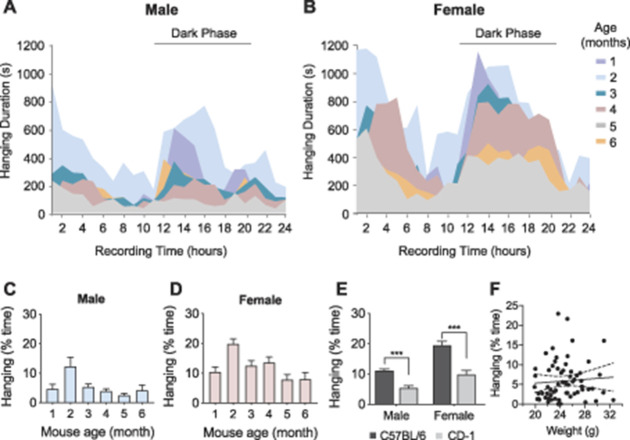Figure 3.
Hanging behavior is dependent on circadian and physiological factors of age, sex, and strain. (A) Hanging behavior in 1- to 6-month-old male (n = 8) and (B) female (n = 8) C57BL/6N mice over a 24-hour period. Peak hanging periods occurred upon introduction of mouse to the testing cage and during the dark phase. (C) Hanging behavior of male (n = 8) and (D) female (n = 8) C57BL/6N mice expressed as total percentage of time of a 24-hr period at different ages. Two-month-old mice show significantly higher hanging behavior than older and younger mice in both males and females. (E) The effect of sex and strain on hanging behavior. C57BL/6N mice (n = 26 male, 26 female) showed significantly more hanging behavior than CD-1 mice (n = 17 male, 17 female). Female mice showed more hanging than age-matched male mice regardless of strain. (F) Hanging behavior of 2-month-old naive male C57BL/6N mice (n = 64) did not correlate with the weight of mice. Data represented as mean ± SEM. *P < 0.05, **P < 0.01, ***P < 0.001 as indicated.

